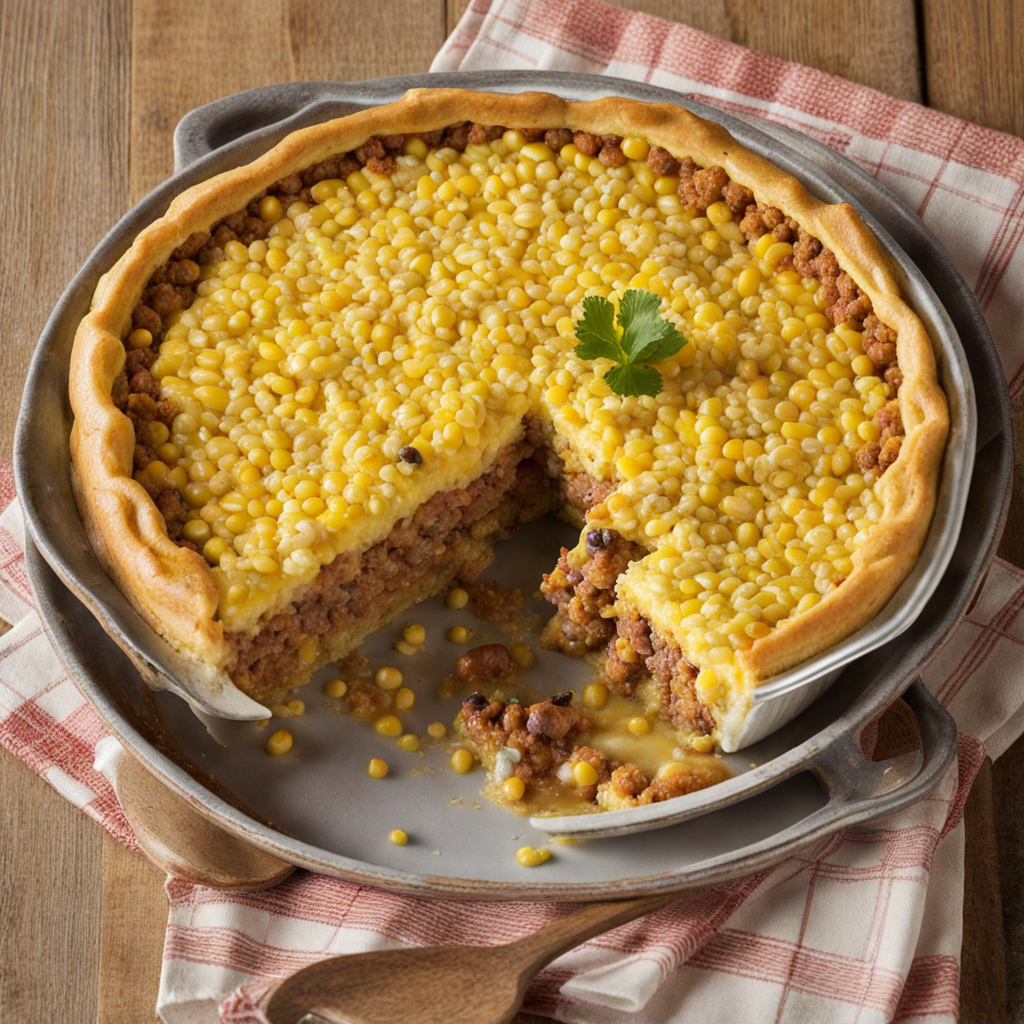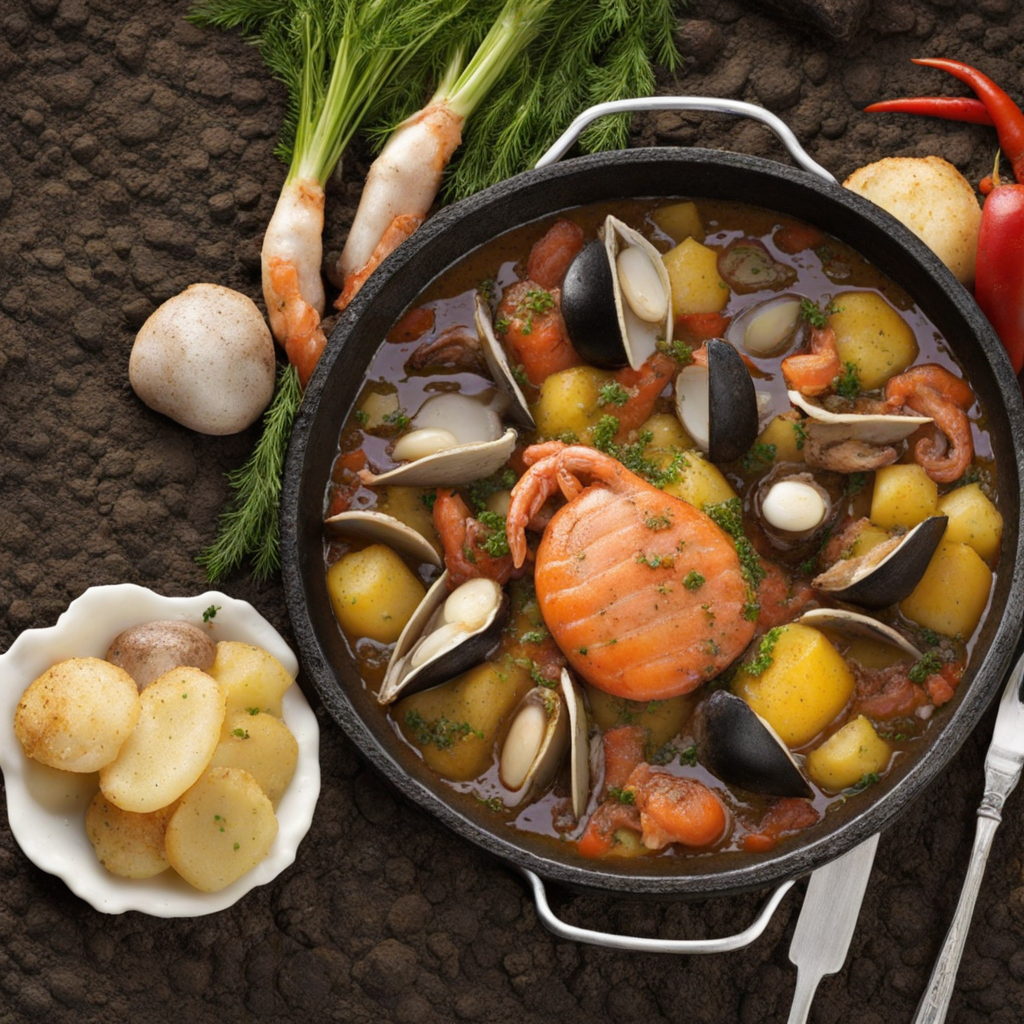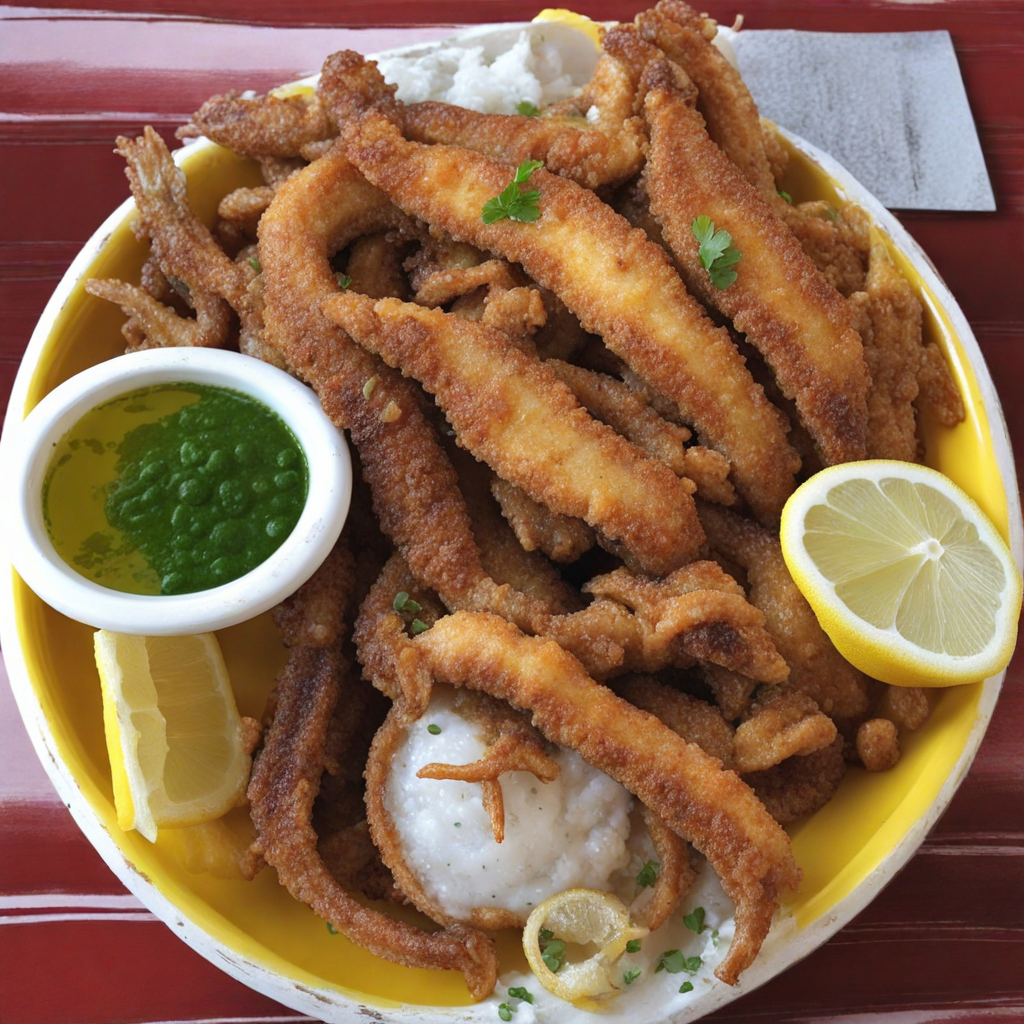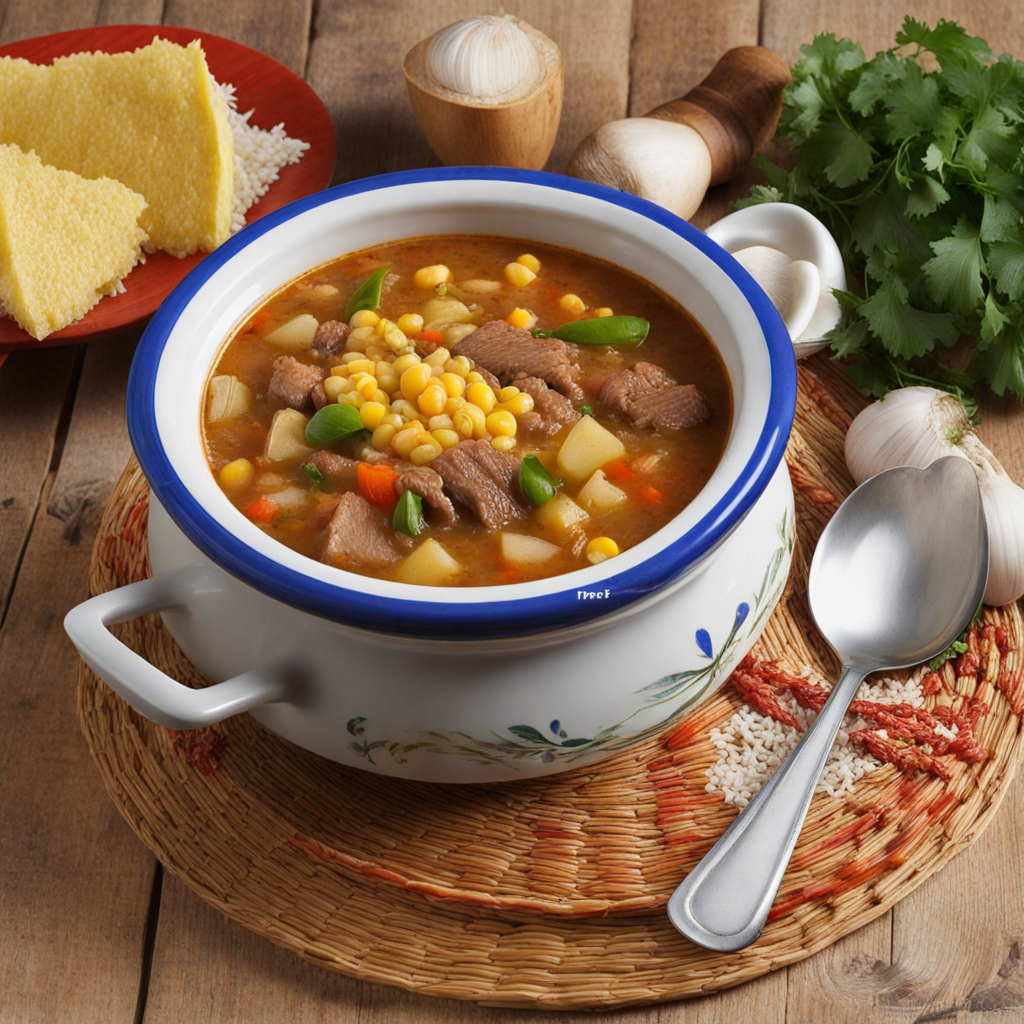Pastel de Choclo
Pastel de Choclo is a delightful Chilean dish that beautifully combines the flavors of corn and savory filling, making it a must-try for those looking to explore new tastes. At its core, this dish features a rich, comforting layer of ground corn, which is transformed into a smooth and creamy topping known as "choclo." The corn is typically blended with milk and butter to achieve a luscious consistency that complements the hearty filling beneath it. The vibrant yellow hue of the corn topping adds an inviting visual appeal, making it a feast for the eyes as well as the palate. The filling of Pastel de Choclo is where the dish truly shines, showcasing a medley of flavors that reflect the essence of Chilean cuisine. It usually includes a mix of seasoned ground beef, chicken, or even vegetables, combined with onions, olives, hard-boiled eggs, and spices like cumin and paprika. This combination creates a savory and aromatic base that pairs perfectly with the sweet corn topping. Each bite offers a delightful contrast between the lusciousness of the corn and the robust, savory filling, providing an exciting tapestry of flavors that dance on the tongue. Served hot and often accompanied by a simple salad or a side of pebre, a fresh Chilean condiment made from tomatoes, onions, and cilantro, Pastel de Choclo is a dish that embodies comfort and tradition. Whether enjoyed at home or in a local eatery, this iconic Chilean casserole will transport you to the heart of Chilean culinary culture, inviting you to savor the unique blend of sweet and savory that defines this beloved dish. It’s a wonderful way to experience the warmth of Chilean hospitality through food, making it a cherished choice for gatherings and celebrations.
How It Became This Dish
## Pastel de Choclo: A Taste of Chilean Heritage Origins and Ingredients Pastel de choclo, a beloved dish in Chilean cuisine, is a corn pie that beautifully encapsulates the fusion of indigenous and colonial influences in South American cooking. The name "pastel de choclo" translates to "corn pie," with "choclo" being the Spanish word for corn, derived from the Quechua word "chuklu." Corn, or maize, is a staple crop that has been cultivated in the Americas for thousands of years, long before the arrival of Europeans. Indigenous peoples in the region, including the Mapuche, valued corn not just as a source of sustenance but as a significant cultural symbol. They consumed it in various forms—boiled, ground into flour, or processed into beverages. The arrival of Spanish colonizers in the 16th century introduced new ingredients and culinary techniques. They brought with them livestock, dairy, and wheat, which began to blend with the native ingredients, leading to the creation of hybrid dishes. Pastel de choclo is a prime example of this culinary syncretism, marrying indigenous corn with European meats and seasonings. Composition of Pastel de Choclo The classic pastel de choclo comprises several layers that showcase its rich history and diverse influences. At its base is a layer of meat, typically ground beef or a combination of meats such as chicken and pork, seasoned with onions, olives, hard-boiled eggs, and spices. This savory filling reflects the Spanish penchant for hearty, meat-based dishes. On top of the meat filling lies a thick layer of pureed corn, which forms the pie's signature crust. The corn is often mixed with basil, lending a fresh herbaceous quality that brightens the dish. The top layer may be finished with a sprinkling of sugar before being baked, creating a delightful contrast between the savory filling and the slightly sweet corn topping. Cultural Significance Pastel de choclo is more than just a dish; it is a cherished cultural artifact in Chile, often served at family gatherings, celebrations, and traditional feasts. Its versatility allows it to be enjoyed as a comforting home-cooked meal or as an elegant dish at festive occasions. The preparation of pastel de choclo often brings families together, as it is typically made in large quantities, allowing for sharing and communal enjoyment. The dish is particularly associated with the Chilean summer, when corn is in season and festivities are abundant. It is common to find pastel de choclo featured at "asados" (barbecues) and "fondas" (traditional food stalls) during the Fiestas Patrias, Chile's bicentennial celebrations in September, which honor the country’s independence. Development Over Time Throughout the centuries, pastel de choclo has evolved, reflecting changes in culinary trends and demographics in Chile. While the traditional version remains popular, modern interpretations have emerged, accommodating dietary preferences and regional variations. In urban contexts, pastel de choclo is often adapted to include various proteins, such as chicken or even vegetarian options, catering to a more diverse population. While the classic recipe is still cherished, contemporary chefs have experimented with flavors and presentations, incorporating gourmet elements like truffles or artisanal cheeses. Regional variations also exist, showcasing the local ingredients and culinary traditions of different areas in Chile. For instance, in northern regions, you might find pastel de choclo prepared with seafood, reflecting the coastal influences, while in the south, it may include local game meats or wild mushrooms. The globalization of food culture has also impacted the way pastel de choclo is perceived and consumed. Chileans living abroad, particularly in the United States and Europe, have sought to share their culinary heritage, leading to a resurgence of interest in traditional dishes like pastel de choclo. This has not only allowed expatriates to reconnect with their roots but has also introduced this delicious dish to new audiences. Contemporary Significance and Global Reach In recent years, there has been a growing awareness of the importance of preserving traditional recipes and culinary heritage. Initiatives promoting "slow food" and local ingredients have inspired chefs and home cooks alike to embrace the authenticity of dishes like pastel de choclo. Artisan markets and food festivals across Chile now feature pastel de choclo as a staple item, celebrating its cultural significance and delicious flavor. Food enthusiasts from around the world have also begun to recognize the dish as an example of Chile’s rich gastronomy, leading to an increase in its popularity beyond national borders. Social media has played a crucial role in elevating the profile of pastel de choclo. Instagram and food blogs showcase visually appealing versions of the dish, encouraging home cooks to try their hand at making it. This digital platform has enabled the sharing of recipes, cooking tips, and personal stories related to the dish, further solidifying its place in modern culinary culture. Conclusion Pastel de choclo stands as a testament to the rich tapestry of Chilean history, woven from the threads of indigenous traditions and colonial influences. Its evolution over time reflects the adaptability and resilience of Chilean culture, as it embraces change while honoring tradition. As society continues to evolve, so too will pastel de choclo, but its heart—rooted in the shared experiences of family, community, and heritage—will remain unchanged. Whether enjoyed in a cozy home or at a lively festival, pastel de choclo continues to nourish both the body and the soul, embodying the spirit of Chile itself.
You may like
Discover local flavors from Chile







